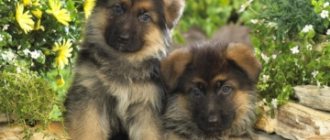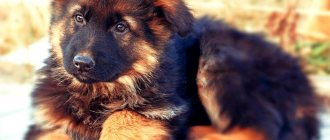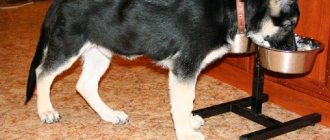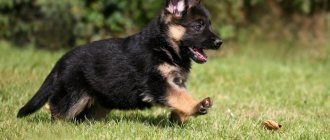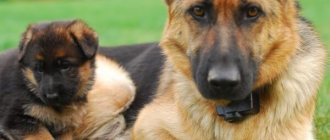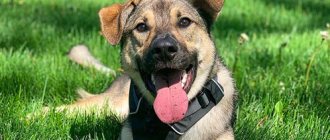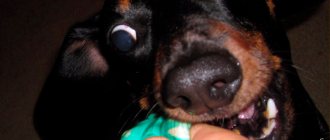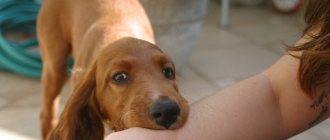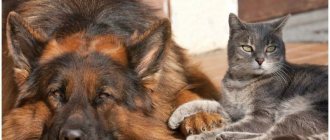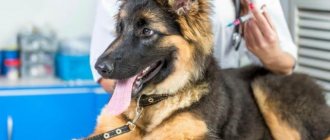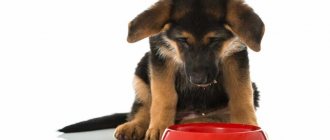Having a dog in your home is not only a great joy, but also a responsibility. To ensure that communication with your pet brings only pleasure, it is important to carefully think through the model of upbringing and study the characteristics of these animals and their needs. One of the most common problems for novice owners is that the puppy bites everything around. In the early stages, such behavior may be associated with the eruption of permanent teeth and exploration of the outside world. If handled incorrectly, this can lead to damage to items and injury in the future. In this article we will look at how to properly train a puppy to stop biting.
Why does a dog start biting?
It’s natural for a puppy to get angry, grab everything, jump and bite. First of all, this should be regarded as knowledge of the surrounding world. Kids should try everything by tooth. The need to gnaw on things and the owner’s hands and feet appears especially acute during the change of teeth. This usually happens at 3-7 months.
Little puppy biting its owner
Note! There is no point in fighting; you need to try to make this period easier for a small dog by giving toys that massage the gums when chewed. Mainly used are rope rings and rubber toys.
This age is also the optimal time to start brushing your teeth. Animal care products have a calming effect.
Breed predisposition
Some people may not know, but there are dog breeds that are more prone to aggressive behavior than others. Dogs of fighting breeds require the greatest attention to training; often, to correct behavior, it is necessary to resort to the help of dog handlers.
Small representatives of working and hunting breeds (Dobermans, Rottweilers, huskies and huskies), as well as highly excitable breeds, also tend to bite.
Hunting instinct and wrong games
At the level of instincts, babies bite each other, grab toys with their teeth and learn to defend themselves. This is an inevitable process during which the pet's behavior is established. Once in the house, the dog begins to perceive its owner and other family members as members of the pack, therefore, learns to interact with them through biting, fighting, growling, etc.
Important! From the first days in the house, you need to outline the boundaries of what is permitted and explain to the puppy how not to behave.
You can't play with your puppy with your hands
Miseducation
One of the main reasons for aggression on the part of a pet is lack of or improper upbringing. During training, people often make mistakes, and sometimes they completely leave this moment to chance.
Important! Having taken a dog home, a person must be fully aware of what a responsibility this is, since an adult pet can not only ruin things, but also injure a person
Why does a puppy bite arms and legs?
When playing with a person, the puppy perceives his arms or legs as “prey”. The usual way to catch it is to grab it by biting it. Due to its age, a small pet may not yet understand how hard it bites its owner. And if you don’t teach a dog to bite from childhood, then the animal will carry this “game” into adulthood.
Photo: Giuliano Maiolini
This is fraught with injury to surrounding people and animals, and aggressive behavior. Having the habit of grabbing arms and legs, clothes, the dog will not distinguish how weak its opponent is, and may even bite the child.
How to train to a tray?
This is easy to do if you place a diaper or tray next to the puppy’s bed and put it there every time he wakes up or eats.
Over time, the Yorkie will understand that this is where he needs to go to the toilet and will independently go to the litter box, which from now on must be gradually moved to the place where it is planned to install a permanent dog toilet.
If the dog refuses to go to the rearranged tray, then you need to return it to its place, and then, after waiting a couple of days, start moving it away again, but more slowly.
IMPORTANT! Every time after moving it, the place where the tray stood before must be thoroughly washed and treated with an odor-eliminating agent.
German Shepherd bite
There is a saying that when a German Shepherd bites you, the mark stays with you for a long time. An aggressive 30-pound dog charging at you can quickly turn ugly.
Think about broken bones, damaged muscles, deep cuts, bruises, scars and expensive medical bills. Although this is rare, it can sometimes result in the death of the victim.
German Shepherds have a bite force of 238 pounds per square inch (pound-force per square inch, or a measure of the force a bite causes on the victim), compared to humans with a bite force of 162 pounds per square inch.
© shutterstock
In fact, the American Animal Hospital Association lists the German Shepherd as one of the six breeds with the most dangerous bites, based on a study conducted in the United States.
Therefore, training your Shepherd to prevent him from biting is a must as it will not only reward you with a good dog but will also ensure your safety as well as the safety of those around you.
The crucial step toward correcting this troublesome behavior is to first understand why German Shepherd puppies bite.
Puppy safety
So, a very important block that the owner of a Yorkie puppy needs to master is ensuring his safety.
It is advisable to limit the space for the puppy when you leave home and he is left alone. This will not only save many valuable things, but will also protect the puppy.
All wires in the apartment must be removed.
You should not lift the puppy onto the bed or sofa and leave it there. He may have a bad jump. For the same reason, you should not let a small child hold a puppy, he may throw it or simply let go of it and the dog will break its paw or knock off its internal organs.
Toys should be made of material from which the puppy cannot chew off small parts.
Make sure that the puppy does not tear the diapers. If the puppy eats them, the damage may be irreversible.
Take your puppy outside only on a leash. Even if he obeys you at home, on the street something may frighten or captivate him. As a result, the puppy may fall under the wheels of a car or into the mouth of a large dog.
And the main thing in raising children is patience. Puppies grow quickly and by the age of 8-9 months I begin to understand perfectly what is required of them, what rules are established in the family.
Breed predisposition
Some breeds are more likely to bite than others. As a rule, such behavior is expressed in large working dogs: husky, German shepherd, Alabai. It is believed that this is due to the animal’s genetic memory, the mother’s behavior pattern, temperament and the need for systematic exercise.
Dogs with a powerful jaw, for example, Rottweiler, Pitbull and Staff, must undergo correction from puppyhood.
This will avoid problems in the future - an uncontrollable dog is a huge threat to others.
Even if the puppy is small, you should not develop a love for biting. Even small teeth can cause a lot of problems. Popular breeds in this group:
- Jack Russell Terrier;
- Toy Terrier;
- French Bulldog;
- pug;
- chihuahua;
- Pomeranian Spitz.
If you cannot cope with raising your pet, regardless of the size of the animal, you should contact a professional dog trainer. He will select the most appropriate behavior model, taking into account the characteristics of the breed and the dog’s temperament.
Where is the best place to buy a puppy, and what is its price?
In order not to make a mistake with your purchase, purchase a puppy from professional breeders or nurseries
The first ones can be found via the Internet, pay attention to the breeding experience, it must be at least 3 years. The breed club of your city can also give recommendations, it will also provide contacts and advise on the nuances of keeping the breed
Large nurseries are located on their website. There are usually documents and information about the dogs: graduates, their titles. A useful bonus is the ability to check reviews about the organization. The price of puppies varies as much as possible; on average, a good baby is bought for 18-20,000 rubles. In this case, the cost can vary from 10 to 50 thousand. It depends on:
- pedigree. The title of parents increases the price;
- assessment of the puppy by an expert dog handler;
- characteristics of the entire litter, if it is uniform, healthy, the cost increases;
- floor. Girls are more expensive, since the owner will be able to breed in the future.
Yorkshire terrier puppies, like other purebred dogs, are divided into classes. The higher it is, the more expensive the dog will be:
| Show class | Breed-class | Pet class |
| The pet is bought for the purpose of participating in exhibitions, further breeding and selling puppies at a high price. The puppy's parents must have championship titles and meet the ideal breed characteristics | Puppies are of average price, participate in exhibitions, but do not have high prospects. The pedigree of the parents must be documented, there must be no disqualifying characteristics | These are “imperfect” dogs, purchased only as companions. They will not participate in competitions and are cheaper than others. At the same time, from an everyday point of view, they can be beautiful, full-fledged representatives of the breed |
A dog’s professional career is an additional expense for you, so take this into account when choosing a pet.
Now you know how to choose a healthy Yorkie puppy. Use this information, focus on your goals and preferences, choose conscientious sellers, then your pet will become a great joy for you.
The best detailed description of the Balinese cat breed
Comments
- about the project
- Contacts
- Media kit
- Terms of use
- Terms of competitions
- Site Map
“Network publication “Woman’sDay.ru (Woman’sDey.ru)” Certificate of registration of mass media EL No. FS77-67790, issued by the Federal Service for Supervision of Communications, Information Technologies and Mass Communications (Roskomnadzor) December 13, 2016 16+.
Founder: limited liability company "Hirst Shkulev Publishing"
Editor-in-Chief: Dudina Victoria Zhorzhevna
Copyright (c) Hirst Shkulev Publishing LLC, 2022.
Any reproduction of site materials without the permission of the editors is prohibited.
Contact information for government agencies (including Roskomnadzor):
- How to stop your Yorkie from biting
- How to stop a dog from biting
- What to do if your puppy won't let you pet him
- Toys, persistence, patience
Growling and biting should not be practiced with dogs of serious large breeds!
Never hit a dog, and especially don’t kick it!
- How to stop a puppy from biting his legs
- How to stop a dog from biting your hands
- How to train a Yorkshire Terrier
- How to stop dogs from biting
- What to do if your puppy bites
- How to wean a puppy off your hands
- How to stop a puppy from biting
- How to stop a puppy from chewing things
- How to stop a dog from chewing furniture
- How to raise a Yorkie
- How to beat Saints Row 4
- How to stop a toy terrier from biting
- How to care for a Yorkie
- How to become a Yorkie breeder
- How to beat Darksiders 2
- Review of the game “Depth”: fighting bloodthirsty sharks
- How to feed a Yorkshire Terrier puppy
- How to wean a puppy off the bed
- How to stop a dog from growling
- How to stop a dog from chewing wallpaper
- How to stop your dog from eating feces
- How to stop a dog from chewing wires
- Yorkie puppy in a new home
- How to care for a Yorkie puppy
- How to stop a kitten from biting
- How to raise a Yorkshire Terrier
Feeding a Yorkie puppy
This site contains a lot of information about how and what to feed your Yorkie. You can read them in the “feeding” section. I recommend that you familiarize yourself with the list of foods prohibited for dogs.
In this article I want to draw your attention to key points:
- You must initially decide what you will feed your dog - dry food or natural food. Mixing different types of feed is strictly prohibited, as this will have a very negative impact on digestion.
- Yorkies have a weak point - the liver. You should not give Yorkies and Biewers fatty foods: fatty pieces of meat, fatty cottage cheese, etc.
- You should not give your Yorkies tubular bird bones; they can easily injure themselves and even cause irreparable harm.
Is it necessary to punish
It is important to understand that when weaning a puppy from bad behavior, you should not use punishment. Rough treatment by the owner can frighten the animal and lead to aggression in the dog.
Photo: Matthew
Negativity on the part of the owner will reinforce in the puppy the idea that playing is painful and that exploring the world around him is unacceptable. By punishing a pet, a person risks turning a kind, sweet puppy into a downtrodden, timid animal.
How to stop a puppy from biting: effective tips and techniques
It doesn't matter whether you are the owner of a miniature Yorkie puppy or a plump Neapolitan Mastiff - all children love to play equally. The so-called playful fighting and light biting of an opponent is something that is common to all dogs at an early stage of life.
When he gets into a new family, he does not change his habits on his own, which often affects the unadapted sensitive skin of the household. Of course, the bite of a baby pinscher differs significantly from the grip of a baby shepherd dog, but you must agree that such behavior is not acceptable. How to stop a puppy from biting will be described in more detail in this article.
Causes of aggression
Not being able to express emotions differently. Unlike a person who can express his greeting with a handshake, his possibilities are very limited. When he is among his littermates and mother for a long time, they teach the baby the concept of pain from a bite by stopping the game. If he was weaned too early or he was born the only one, then the painful edges and the strength of the bite cannot be regulated at all.
Inflammation of the gums. In a small dog, by analogy with babies, as the teeth grow, the gums swell and itch. In this case, the dog does not express aggression or play, but simply scratches its gums on any object, be it a leg, hand, toy or slipper of the owner.
An attempt at dominance. In the case when he repeatedly bites the owner in every situation he dislikes, especially accompanied by a dull roar, sound the alarm - for the dog you have ceased to be an authority. If the situation is allowed to take its course, be prepared that the dog will not tolerate any restrictions in the future.
Often inexperienced young owners, when they get a little dog, are touched by his games and light nipping, not realizing that such loyalty can soon play a cruel joke. Even a dwarf Yorkie, pinche
Source
Why does a puppy “grab” clothes?
A puppy can bite not only on bare hands or open legs. Clothes, especially loose-fitting ones, seem no less attractive to a small dog for hunting.
Photo: Christopher
Often a person reacts less emotionally to “grabbing” clothing than to biting the hands or body. This fact confirms this type of play as acceptable for the puppy. But an attack only on clothes is fraught with aggression and disobedience in the future.
Yorkie training
The main, basic rule in training any animal, including the Yorkshire Terrier, is the undivided contact between the trainer and his subject. Terrier dogs have inherited many amazing character traits from their ancestors, and it is precisely because of this that terrier dogs are so easy to train. Representatives of this breed often love to exercise. Therefore, there is no point in forcibly breaking into the door that is open (figurative expression). From the first moment of your coexistence with the dog, the owner must try to find contact, gain trust and complete mutual understanding.
Also, do not forget in any circumstances that terriers are very sensitive babies. They will be sensitive to every change in your mood. And that is why you can raise this breed of dog only when you are in an exceptionally good mood. Then, when the Yorkshire Terrier is placed in the care of children, it often replaces a living toy for them. This attitude is unacceptable!
Are biting elements of play or aggression?
The danger is often posed not only by strangers or stray dogs. There are several reasons why a German shepherd can bite a person or another animal, including play and even open aggression. Any four-legged pet has a certain sense of ownership towards food, toys or owner . Any action perceived as an attempt to take such an object will often provoke a German Shepherd into a defensive response.
No less often, a bite is a manifestation of an innate maternal instinct or selfless protection of one’s offspring. In this case, aggressive behavior can be demonstrated even to an owner who behaves carelessly. An injured or sick animal, even a very friendly, peace-loving animal, is quite capable of aggression, which is a natural reaction to pain.
This is interesting! One of the most common cases of a person receiving dog bites is an attempt to separate fighting animals. At the same time, a person’s legs and arms become the most vulnerable places for injury.
Every dog prefers to respond to a threat with aggressive behavior, so you should refrain from sudden or unexpected gestures that are perceived inadequately by the animal and can provoke an attack by the four-legged pet. Some breeds of dogs, including the German Shepherd, are specially trained and used to protect against intruders and intruders, so it is strictly not recommended to approach such animals unless necessary.
Return to content
Why does a dog bite and what to do about it?
Correcting a dog's behavior requires patience, observation and consistency of action from the owner. A pet doesn’t bite just like that, it’s a reaction to a stimulus, an expression of emotion.
In order for your four-legged friend to be manageable, it is important to teach him to control himself. Let's look at the problem of "biting" in two directions: young and adult animals
Firstly, he is still learning to live. And while he doesn’t know that he’s hurting, he doesn’t know how to control the force of clenching his jaws. If you watch struggling puppies, you will notice that in the process of fussing they bite each other, and if they get carried away, the “victim” shows with his voice where to stop. When you are playing with a puppy and he bites you hard with his teeth, you should let him know that he caused pain.
You can come up with a special exclamation, for example, “Ay!”, after which you immediately stop the game. The sequence “command - cessation of communication” will lead to the fact that he will gradually learn to control his powers.
Secondly, teeth change. During this period, the puppy constantly wants to chew something, massage and scratch his aching gums. Make sure he has rubber toys, gelatin bones or natural large bones nearby. An ordinary raw carrot can serve as an excellent toy: both a delicacy and a means for loosening baby teeth.
If he missed a moment and bit his hand painfully during the game, don’t scold him. Stop it and then gently massage his gums with your finger while talking to him gently.
Don’t be shy about playing with the timbre of your voice: simple commands are given in a calm, confident tone, prohibitions are given in a firmer tone, but without shouting. Gradually he will remember the connection “timbre - situation”, and it will be easier to control him.
Here, stopping the game alone cannot correct the situation, and you need to
Source
Correction during the game
Raising a puppy is best done while playing. This allows you to avoid the animal’s negative emotions - the necessary skills are reinforced by the pet’s positive experiences. The easiest way to deal with a dog biting his legs or arms is to put a ball in his mouth at the beginning of the movement. Alternative methods and useful recommendations:
- Try to avoid positive reinforcement for careless play. If your puppy begins to bite while interacting with you, you should immediately respond to his behavior. In this way, let your pet know that the game is a reward for good behavior.
- If the puppy begins to behave too actively during interaction or play, biting, stop the contact, turn his head to the side and cross his arms over his chest. Continue the game only after the dog has calmed down.
- Say “ouch” or “that hurts” loudly when the puppy lunges to bite you. An alternative is to use a squeaky toy.
Any correction should be gradual. First, you need to demonstrate your reaction only to strong bites, then avoid even accidental biting.
Toilet training a puppy
When the puppy is with its mother, who carefully goes to the toilet in the diaper and leaves the correct marks there, the puppy repeats after her. This is how the puppy gets used to doing everything in the diaper. But you need to understand that the diaper itself does not mean anything to the puppy. He knows the smell. Externally, a baby diaper is no different from a carpet or bedspread. Therefore, when accustoming a puppy to a diaper in a new home, you need to be patient. And of course there are a few little tricks that can help in this matter.
Best Irish Terrier
A small puppy, like a child, always goes to the toilet after sleep. Therefore, the first time you teach your baby, you should put him in a diaper immediately after sleep and wait for the desired result. If the puppy is in an enclosure, then you should let him out not immediately when you return from work or wake up in the morning, but 10 minutes later - just after he has done everything necessary for the diaper. If you see that the puppy has made a puddle, take the diaper that you prepared for the baby, wet the puddle with it and put the diaper where you plan to organize the toilet. After about 15 - 20 minutes, put the baby on the diaper, let him smell it and sit next to him until the baby does everything necessary where required. Be sure to praise your child for his achievement. If you again find a puddle out of place, criticize the puppy and put him in a diaper
It is important that this should be done at the moment when the baby has just gone to the toilet. If the moment is missed and some time has passed, the puppy simply will not understand why you are unhappy
And if you are too aggressive, you will develop fear in him and the puppy will begin to look for secluded places for the toilet. Limit the space where the puppy can be. After all, he, like a small child, simply does not have time to run to the toilet, he often plays around. The smell of a diaper is important only if it is within reach.
From my personal experience: it is easier to train a dog to go to the toilet outside. If you are ready to walk your baby twice a day, then the problem with the toilet will very soon disappear for you. True, you will still have to leave a diaper at home for the puppy for at least 7–8 months, because... a small puppy simply cannot wait until the right time.
Help from a dog handler
If a puppy at the age of six months continues to bite, it is recommended to contact a dog trainer and animal psychologist . At this age, only the help of a professional will help correct unwanted behavior. You can sign up for group classes to socialize your pet at the same time, or individual classes.
What to choose:
- Standard classes in which the dog handler helps the owner and the puppy understand each other. The specialist will select the appropriate training method, help correct errors in training methods and help correct the unwanted behavior of the four-legged animal.
- General training course (GTC) : these classes are more complex and longer. There, the dog handler will explain to the owner how to achieve the pet’s obedience. Will work on the dog's interaction with the owner, strangers and other animals. He will also explain how to learn useful, basic commands that will help in further training.
- Protective guard service course (PSC) : the course is suitable for large and medium-sized dogs of guard and service breeds. Depending on the breed, the course is recommended to be taken from the moment the dog is fully formed. Some breeds are allowed from 8 months of age, while others from two years of age.
An animal psychologist will help correct behavior and establish mutual understanding with the dog. Classes with a psychologist can begin from early childhood.
Characteristics of Yorkshire Terriers
In order to better understand his four-legged friend and correctly evaluate his behavior and actions, the owner should take a closer look at the main character traits of the Yorkie.
Little dog on the outside, lion on the inside
What should you expect from a dog that is smaller in size than a cat, but at heart considers itself at least a shepherd dog? Yorkies are quite pugnacious and can fight with opponents that are larger than them. The dog will defend itself, its owner, its offspring, its territory. It is not surprising that many miniature terriers get injured and even die in unequal fights.
To avoid this, it is advisable for the owner to take the pet out where there is no chance of meeting a potential enemy (owners of male dogs need to be especially careful). A leash should be used.
Yorkies can be quite mischievous
If the dog is constantly carried in arms or in a carrier, he remains alone in the house for a long time, and little attention is paid to him and played with, then problems cannot be avoided. Having not splashed out excess energy during active entertainment and walks, the pet begins to show in every possible way that he is bored - a signal could be a torn pillow, torn wallpaper or a chewed shoe
It is useless to punish a pet; it is enough to satisfy its physical needs, and the problem will go away on its own. The easiest way to solve the problem is if the Yorkie lives in a private house with a spacious, carefully fenced local area. The dog will happily run around the yard, wasting energy without outside help. But it’s worth considering that digging under and running away is a trifle for a terrier; you need to think about how to deepen and strengthen the foundation of the fence.
York is a real trickster
Most decorative breeds are inherently infantile, but this does not apply to Yorkies. They are smart, cunning and real strategists; it costs them nothing to turn the situation in such a way as to manipulate the owner.
And what acting skills does this charismatic dog have! He is very skillfully offended, making an incredibly pitiful look and trembling paws. And if the owner does not immediately understand this, the dog will begin to feign universal resentment over and over again, honing his skills as a “great schemer” and shirking his responsibilities.
Yorkies, like their larger brothers, need education, socialization and training. If a pupil ignores commands, then he should be punished - not physically, but morally - a cold tone of voice will already tell the pet that the owner is dissatisfied
In addition, this dog needs human attention, and denying it is a very effective punishment.
Dogs of this breed remember insults for a long time and take revenge when the opportunity arises, so hitting or shouting at a Yorkie during training is not recommended.
York - professional fugitive
Again, we are talking about an ill-mannered dog whose owner did not pay enough attention to training his four-legged friend. The owner should never miss the fact that Yorkshire Terriers are representatives of the hunting dog species, and their working instincts are quite strong.
The pet is always ready to rush after a passing cat, bird or mouse, often getting into trouble. If the dog has not completed a full course of obedience and behavior in an urban environment, then letting it off the leash in crowded places is very, very dangerous.
Best How to stop a dog from biting
Yorkie is a complete dog
A tiny terrier always remains a terrier, not a toy or fun, but an ordinary dog, albeit a small one. The dog loves to be the center of attention, but he also needs personal space. You should not look after your four-legged friend 24 hours a day and constantly be with him.
Often dogs of this breed suffer from stress and neuroses due to the fault of the owner; they become fearful or overly aggressive. This happens when a person constantly carries his pet with him - on a visit, shopping, to noisy events, thereby not allowing him to be in silence and relax.
In addition, many owners think that the best place for a pet to rest is the master's bed. But, in fact, like other dogs, the Yorkie needs his own lounger, his area where outsiders are prohibited from entering.
How to punish
If a puppy does not obey its owner, it is properly punished. When a baby is brought into the house, he is given a place to sleep and rest. If he bites, send him to “serve his punishment” in a sleeping place.
To show your strong character, grab him by the withers and press him to the ground. Another option: grab the muzzle with your hand and don’t let go for a few seconds.
If your finger ends up in the animal’s mouth, you must carefully open the jaw, remove the finger, close your teeth and strictly say “no!”
You should not physically punish your pet: he may see this as a challenge and continue his aggression. It is especially dangerous to hit small breed dogs: it is difficult to calculate the force of the blow and you can harm the animal. You should not spray various repellent sprays in the face, this will spoil your vision and sense of smell.
Command training
A basic set of commands is a necessity when raising a Yorkshire Terrier. Thanks to this, the life of both the pet and the owner will be easier, since they will be able to go for walks, to the veterinarian, to meet strangers, and also to visit a grooming salon without hassle.
Important! The main thing when teaching a child is to pronounce commands clearly and accurately and accompany this with a certain action. This rule should not change
"Sit" and "lie down"
To teach your pet these commands, you need to fix him in the right position during the game, clearly pronounce the command, stroke him and treat him with something tasty while the dog is sitting/lying. This command is learned quite quickly.
"To me"
Teaching a Yorkie the “come to me” command is as simple as teaching it the other basic commands. To do this, you need to let the dog off the leash while playing or jogging and lure it towards you, saying its nickname, and when the dog runs up, give it a treat and praise it, stroking it affectionately. You will learn this technique quickly.
"Ugh!"
This action should be studied only after a friendly relationship has been established between the animal and the person. You cannot shout at the dog, but you must say the command in a stern voice, while pulling the Yorkie with a leash.
Important! This command indicates that you cannot take an object or that you absolutely cannot perform any action. Therefore, later you also cannot give this thing to the dog, otherwise the command will not be mastered.
"It is forbidden"
The “no” command is similar to the “fu!” command, so you need to act in the same way. The main thing is severity, but not shouting. There should be no aggressive manifestations.
"Place"
To teach this command, you first need to be next to the puppy, then go to your favorite place where the animal usually sleeps, and call him with a word and nickname. Then they give him a treat and pet him. Yorkies get used to this team the fastest.
"Near"
While working with this skill, the dog should be at the owner's left leg. In order for the animal to learn this command, you will need to slightly pull it towards your leg with a leash and collar.
This is a list of basic commands that you should teach your puppy
It is also very important to know how to stop a Yorkie from biting, since the kids who arrived from the nursery are accustomed to playing with their companions, who can play around
First of all, you should try to react in the same way as puppies in the kennel - squeal loudly and not pay attention to your pet for about 20 minutes. You can also fold a newspaper or paper and slap it loudly on the floor, or switch your attention to the game, let the terrier bite his toy
The commands “fu!” also help. and “you can’t.”
Note! An older puppy needs to be turned over on its back, gently pressed to the floor and held there for several minutes. This will show the Yorkie who is boss and who needs to be obeyed.
The dog will quickly learn the lesson.
Switching attention
Puppies quickly switch from one object or action to another. This can be used to stop your dog from biting you. The optimal solution is to use a toy. If your pet begins to show his teeth, take the toy in your hand and then throw it to the side. Various whistles or moving objects can be used. When performing the desired action, be sure to reward the animal with a treat.
Hand Punishment
This method is considered the most natural for dogs, but it is important to correctly calculate the force - excessive impact can cause negative emotions in the pet, aggression towards you, and even health problems. You can't hit the dog, but you can use your hands in the following ways:
- lightly flick the nose or ears;
- pinch the side or croup area, simulating a bite;
- pull the skin on the withers to the side.
Such manipulations cannot be enhanced by emotions - they must be performed only technically, without shouting or raising the voice. It is important that the dog understands why he received the punishment - the impact should be immediately after he begins to bite you.
Let me calm down
If your dog has already mastered simple restraint commands - “stand”, “lie down” and “sit”, they should be used to correct behavior. When the puppy got carried away during the game and began to rage, bite you, say the desired command. Be sure to achieve compliance and then give a treat. In the future, such behavior can be stopped by sending it to a place if the apartment has a sunbed and the pet knows the “place” command.
My food and I eat it. Dog aggression related to food.
- Growling while eating when other dogs or people approach or come into view. Can manifest itself at very long distances. - The dog bites if it feels a threat (real or imaginary) to lose its food. - Turns around and actively defends the food or continues to hastily grab it, often dropping it and not ceasing to growl. - The dog may not be aggressive at the sight of an ordinary food for her, but aggression intensifies at the sight of chewed or real bones, leftover food from her owners, or treats.
Such aggression is the best indicator of the risk of developing dominance-related aggression.
Aggressive dog behavior associated with food must be stopped as follows:
1. Sit the dog down with the “sit” and “wait” commands.
2. After this, placing a bowl of food next to the dog, command “no” or “fu”, preventing the dog from immediately starting to eat.
3. After a certain pause, having allowed the dog to start eating, give the command “may” or “food”. The dog must understand that it only eats with your permission.
4. Interrupt the dogs' meal with the command “sit” and take away the bowl of food. The dog must allow this to be done without any complaints, growls or lunges.
5. Praise the dog and give him a treat if he follows the command well.
6. If the dog breaks down, does not respond to “fu”, “sit” and shows aggression, pull it away from the food by the leash and remove it. Send the dog to its place.
7. Repeat the exercises until the aggression stops.
Why does the puppy grab the legs and arms?
Before solving any problem, you need to understand the cause. Like children exploring the world “by taste,” small dogs, learning about their environment, put everything in their mouths (they don’t bite much). This is how they express joy, love, affection, tenderness while playing with their owner. It is important to learn to distinguish between aggressive behavior, when the puppy is aggressive, wants to cause harm, bites hard, and affectionate.
In some cases, in this way the pet tries to realize its strength.
- Adult dogs fight for power so much, they want to take the highest place in the hierarchy: to become the leader of the family.
- This is a defensive reaction if they are anxious, in a bad mood, or something is bothering them (hurting them).
- Finally, hunting breeds hunt like this.
When a puppy is a month old, he plays with his brothers and sisters: he runs, scratches, bites. This is normal behavior for a two-month-old puppy; this is how he communicates; in this case, you need to wean him off this fun. Biting after 3 months of age indicates a lack of decent upbringing. Some owners believe that the habit will go away gradually without outside intervention. In fact, they are involved in upbringing from the first day the baby appears in the house, otherwise he will grow up aggressive and disobedient.
Prevention of unacceptable behavior
In order not to complicate situations that relate to raising dogs, it is necessary to carry out timely prevention. To do this you will need the following rules:
- Puppies should not be allowed to play with things that belong to family members and the owner.
- You should not use your hand or foot or clothing while playing.
- If your baby starts biting or barking while playing, the easiest solution is to stop the process and go to another room.
- It is necessary to determine a place for the dog to rest. You should constantly remind him of the place.
- While the dog is still small, it is advisable to buy her a lot of toys that she can chew and play with.
- Meeting other pets during a walk should not be accompanied by gnawing or barking - this preserves the pet’s mental calm.
A designated place to sleep
Simple techniques can help in training and accustom even the most “hardcore” offender to good discipline. In addition, behavior can be corrected if the dog bites or tries to bite.
Teaching your dog to behave correctly
A small dog can behave in any way, but it is very unpleasant when he starts biting or scratching. If such a manifestation of behavior or character occurs, then you need to immediately determine the cause, and then begin to eradicate such actions. You can wean your pet off from this using different methods, but prevention is the best way. Typically, simple techniques are used that are actively used by professional trainers.
Matter of habit
Puppies begin to bite from a very early age. An innocent-looking Yorkie can grow into an unpredictable biting dog if his biting habit is not corrected in time.
The easiest way to stop a Yorkie puppy from biting is through training. Every time your Yorkie bites you, remove your hand and say “No” or “Ouch!” firmly and loudly. Your actions and tone of voice will tell your dog that biting is not acceptable. Please note that your tone should imply that you are in pain.
It will be similar to a puppy biting its siblings in the litter. When puppies are together, you will often hear one puppy or the other squeal, telling each other that he or she has bitten too hard. For teething puppies, you should provide some chew toys.
If your dog is older and teething, you should ignore it for at least 5 minutes after the bite. Just don't look, touch or talk to your dog, he's already received your main message "No!" After 5 minutes, you can continue exercising or playing with your Yorkie.
Whenever playtime goes well without biting, reward your pet with praise or a treat. Over time, your dog will learn that biting of any kind is unacceptable behavior. However, howling bites can be caused by a variety of behavioral or physical problems that may be difficult to understand and should be investigated by an experienced professional such as a veterinary behaviorist.
How not to unlearn - common mistakes
Inexperienced dog owners often resort to reading specialized literature, which outlines many of the nuances of training. It takes a lot of time to learn such a plan, but besides this, you should avoid mistakes that can lead to problems in the future:
- It is strictly forbidden to shout and “freak out” at the animal. The pet can partly adopt this example of behavior. Dogs are also irritated by this behavior.
- Under no circumstances should you beat a puppy or an adult dog or pinch its tail. An animal can become aggressive against its owner and attack at any moment.
- You shouldn't use the same technique if it doesn't work. It is necessary to select an individual approach in accordance with the character of the pet.
A parenting mistake is hitting a dog.
Every month the pet grows up, its character changes, and its needs increase. This must be taken into account when choosing methods of influencing your pet.
Yorkie shows aggression: causes and solution to the problem
Both at a young age and throughout its life, a dog can exhibit atypical behavior. And although the Yorkshire Terrier breed itself is fairly balanced and generally calm. If your Yorkie is showing aggression, you should get to the root cause before taking any action. In fact, there can be a lot of them: starting from painful sensations, fear and shock and ending with the presence of certain irritants or typical deviations in the behavior of a small dog. In this article we will look at common situations and make a number of practical recommendations.
What is considered aggression in a Yorkie, and what are the reasons for its manifestation?
An attentive owner will immediately notice uncharacteristic behavior. The dog may begin to not only be wary, but also begin to treat family members, passers-by, and other animals on the street aggressively. The first point to consider is that it is wrong to try to interpret the behavior of an animal with human attitudes and norms. No matter how you try to make a “family member” out of your pet, the Yorkshire Terrier continues to remain a dog; albeit small in size. It is important to remember that the Yorkie perceives a certain group of people (for example, a family) as a pack. Therefore, aggressive behavior may be aimed at protecting this flock. Repelling a figurative attack from a stranger is considered hierarchical aggression. Often certain stimuli come from the leader of this pack (head of the family), who may punish the pet excessively. If the pet came into the house recently, especially at an old age, this may indicate its attempt to dominate within the pack.
Sometimes the cause of aggressive manifestations is severe fear, discomfort (painful sensations) or painful shock. If you have an anxious dog with a choleric personality, you're probably very familiar with visits to the veterinary clinic. An irritated pet at such moments can even bite its owner indiscriminately or even inadvertently cause harm to itself. In the process of punishment for misconduct or disobedience, care should be taken to ensure accuracy and proportionality. Small dogs, Yorkies are no exception in this regard, are quite vindictive. Aggressive behavior during attempts at dominance (with the leader of the pack or in the presence of other pets) should not lead to manipulation. Therefore, you should play and feed the dog only when it shows submission and submissiveness. Otherwise, when the pet gets what it wants as a result of aggression, it is postponed on an unconscious level. During the adjustment process, there are many ways to make adjustments at home. This includes scheduled feeding times (strictly according to the schedule), and a ban on lying on upholstered furniture with the owners, and placing a dog bed in a certain place in the living room, and training.
In what cases is a Yorkie most often mischievous?
Yorkies can be aggressive towards children. The reason for this is explained quite simply. In the hierarchical ladder, the young members of the family are below it in the dog’s understanding. Therefore, attempts to play, stroke, cuddle at a time when the animal does not want it (especially during rest and sleep) is fraught with growling and even biting. In this case, corrective measures cannot be avoided. If small children or teenagers do not calculate their strength when trying to raise a dog, this point should be excluded. Do not forget that only the “leader of the pack” should punish the pet. Only in this case will the punishment be perceived correctly. To simulate the situation and hone similar moments, a somewhat rough game is allowed, when you can slightly grab the skin, ears, and then, if aggressive behavior is displayed, it is necessary to apply “punishment.” Accustom your children to walking with your Yorkie in a timely manner and be sure to be present at the first outings.
Harm can also occur in relation to other pets. Moreover, this may not necessarily be the second Yorkshire terrier, but also other “living creatures”: for example, a rabbit, other animals. In this case, it is recommended to try to closely monitor behavior and prevent aggression. You should immediately stop the bully's behavior by letting him know that these actions are unacceptable. Otherwise, harmful behavior that has become a habit will be more difficult to correct later.
When should you correct your Yorkshire Terrier's behavior?
Correction does not have to be strict training. Although, in most advanced cases, some drastic decisions (actions) unfortunately cannot be avoided. It is necessary to choose a suitable obedience course with an experienced specialist. The most optimal age for a Yorkshire Terrier is 3-8 months. But even at a later date, the dog can be adjusted in behavior. It is important not to read opinions and advice on forums that outline the difficulty of changing a dog’s behavior. It's really not easy, but not impossible. Ultimately, everything depends on the owners themselves and an experienced trainer. Do not forget that you will have to live for many years with a dog with a weakened psyche, which is a great discomfort for both family members and the pet itself.
It is worth remembering that Yorkie bites in themselves do not necessarily have to be considered aggression. The fact is that this form of behavior may be typical for a particular dog. This may happen during the game. For puppies, during the change of teeth, this is, in principle, par for the course. But it is important not to miss the moment so that it does not become a habit for a growing Yorkshire Terrier to bite and become aggressive when you want to play/walk/etc.
What to do to correct your Yorkie's behavior? Recommendations and tips
One way is to avoid conflict situations. You, as the owner of the dog, must anticipate their onset: walk around the other animal on the street, feed strictly according to the schedule, do not punish too strictly (do not beat under any circumstances), monitor the state of health. In some cases, it will be necessary to conduct training and exercises to demonstrate to the pet its place and the need to obey. A hierarchical system of relationships must be built. If you can’t cope on your own, contact a trainer or handler. If during the examination, trimming the fur and nails, and combing the Yorkie shows aggression, it is necessary to consistently demonstrate to him the safety and pleasure of the procedure. In this case, you should be patient and teach your dog to react accordingly.
In addition, we recommend that owners of Yorkshire terriers engage in timely socialization of the dog. This will partially neutralize the onset of possible negative consequences. Often people decide to keep their pet entirely at home. Even in this case, it is worth taking your Yorkie for a walk periodically. Otherwise, after some time, the manifestation of aggression will become more frequent. Moreover, for almost any reason. Remember that it is never too late to raise a Yorkshire Terrier.
In the process of growing and raising a pet, a moment arises when you need to decide how to wean a puppy from biting. There can be many reasons for this behavior in dogs. If you decide on the method of weaning in advance, this will allow you to more effectively deal with the problem. Much depends on the breed of the dog, some are more inclined to behave in this way.
- Why does a puppy bite?
- Features of breeds
- Pet training methods
- Correction during the game
- Pinned to the floor
- Punish with hand
- Switch attention
- Let me calm down
- Show dissatisfaction
- How not to unlearn - common mistakes
- What to do if an adult dog bites
- Possible reasons
- Fighting aggression
- Prevention of unacceptable behavior
Possible health problems
A dog may bite if it is teething or has a sudden medical problem. While some illnesses may be obvious, many may go unnoticed. Therefore, if your Yorkie is exhibiting abnormal behavior and regular biting is not part of its character, it is necessary to identify the reasons that led to this behavior dimension.
When a well-balanced dog begins to bite, it may be because he is in pain. This is a common defense mechanism; when she feels that she is not healthy, she may feel vulnerable. And this, in turn, can lead to aggression towards anyone who approaches her.
If a puppy or dog is in severe pain, he or she may perceive even the most loving owner as a threat. For this reason, if bites occur out of the blue, the dog should be taken for a full veterinary examination.
